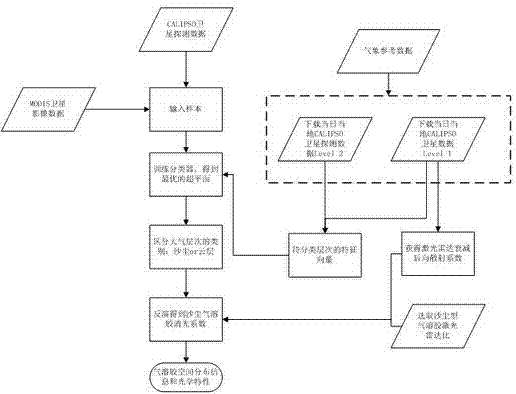Sand-dust type aerosol inversion method based on support vector machine identification
An aerosol and dust technology, applied in the field of satellite remote sensing, can solve the problems of many parameters, complicated Version3 method, and the inability to apply sand and dust research and forecast, so as to reduce the quantity demand and improve the classification accuracy
- Summary
- Abstract
- Description
- Claims
- Application Information
AI Technical Summary
Problems solved by technology
Method used
Image
Examples
Embodiment Construction
[0020] The influence of sand and dust on atmospheric radiation cannot be ignored. Incorrect identification of sand and dust will result in failure to obtain information on the spatial distribution of sand and dust, as well as the effects of dust extinction and atmospheric radiation. A common mistake is to misjudge the dust layer with high concentration in the dust source area as a cloud layer. This is mainly because: in addition to the attenuation backscattering coefficient, the two-wavelength ratio is used to describe the scale characteristics of the particles, and the depolarization ratio is used to describe the shape characteristics of the particles; while the ice crystal cloud and large Particle dust aerosols are both large-scale and non-spherical in character, thus, constituting the presence of this misclassification. The probability density equation classification method officially adopted by NASA has a large number of errors in the early version; after the update, there...
PUM
 Login to View More
Login to View More Abstract
Description
Claims
Application Information
 Login to View More
Login to View More - R&D
- Intellectual Property
- Life Sciences
- Materials
- Tech Scout
- Unparalleled Data Quality
- Higher Quality Content
- 60% Fewer Hallucinations
Browse by: Latest US Patents, China's latest patents, Technical Efficacy Thesaurus, Application Domain, Technology Topic, Popular Technical Reports.
© 2025 PatSnap. All rights reserved.Legal|Privacy policy|Modern Slavery Act Transparency Statement|Sitemap|About US| Contact US: help@patsnap.com



